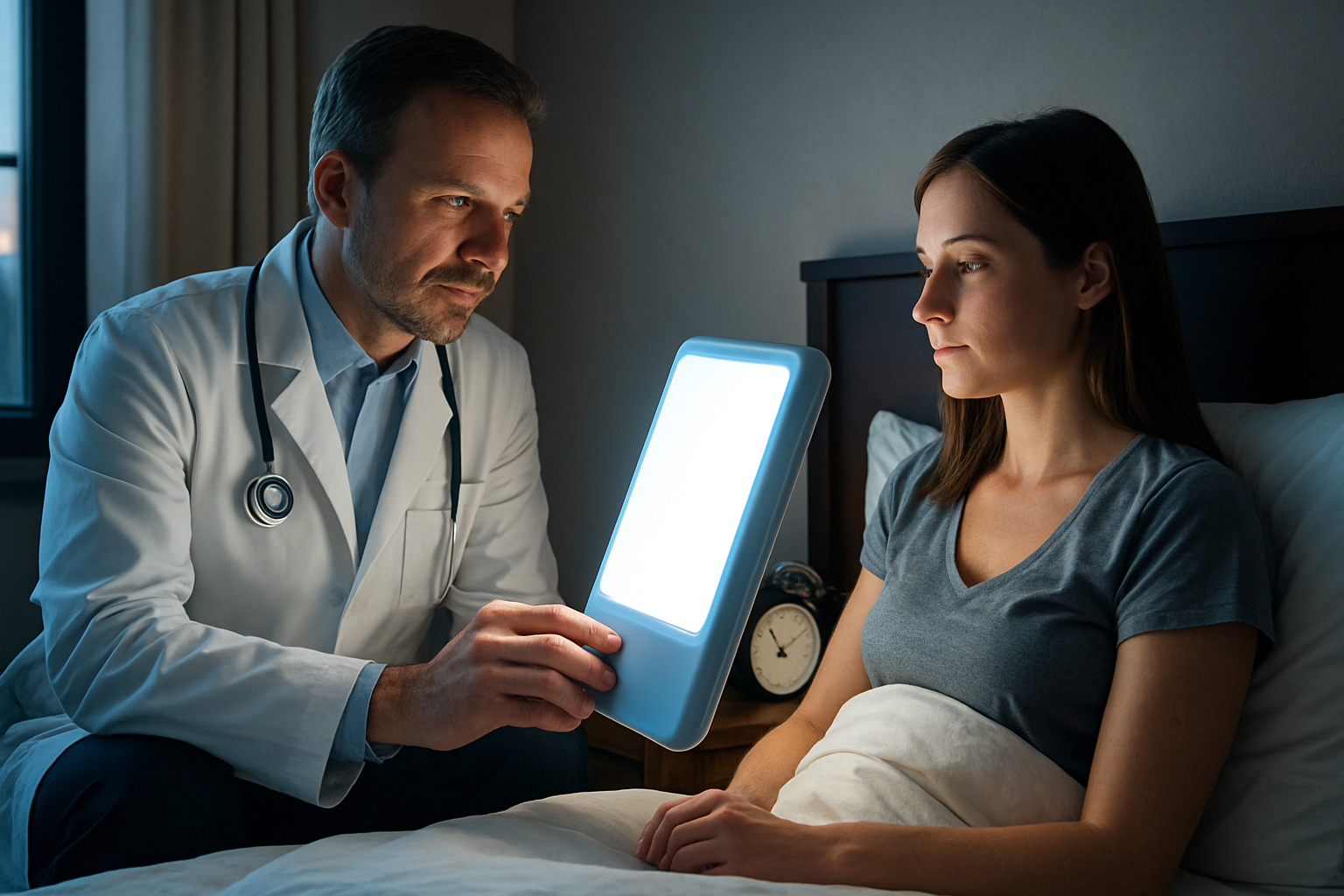Biohacking Your Circadian Rhythm: The Frontier of Personalized Sleep Optimization
Are you tired of feeling tired? Imagine waking up each morning feeling refreshed, energized, and ready to tackle the day. This isn't just a dream—it's the promise of circadian rhythm biohacking, a cutting-edge approach to sleep optimization that's revolutionizing how we think about rest and recovery.

The Science Behind Your Internal Clock
Our bodies operate on a roughly 24-hour cycle, known as the circadian rhythm. This internal timekeeper regulates everything from hormone production to body temperature, influencing when we feel alert or sleepy. At the heart of this system is the suprachiasmatic nucleus (SCN), a tiny region in the brain that acts as our master clock.
The SCN responds to various environmental cues, with light being the most powerful. When light hits our eyes, it signals the SCN to suppress melatonin production, keeping us awake and alert. As darkness falls, melatonin levels rise, preparing our bodies for sleep. This delicate balance can be easily disrupted by modern lifestyles, leading to a host of health issues.
The Rise of Circadian Rhythm Biohacking
Circadian rhythm biohacking emerged as a response to the growing epidemic of sleep disorders and the recognition that poor sleep quality is linked to numerous health problems. Pioneers in this field realized that by strategically manipulating light exposure, meal timing, and other factors, they could optimize their sleep-wake cycles for enhanced performance and well-being.
This approach goes beyond simply getting more sleep—it’s about aligning your daily activities with your body’s natural rhythms to maximize the quality of your rest and waking hours. By doing so, biohackers report improved energy levels, cognitive function, and overall health.
Key Strategies for Circadian Optimization
Hacking your circadian rhythm involves a multi-faceted approach. Here are some key strategies employed by biohackers:
Light Management
Controlling light exposure is crucial for regulating your circadian rhythm. This involves maximizing bright light exposure during the day and minimizing blue light in the evening. Some biohackers use specialized light therapy devices to simulate sunrise and sunset, helping to reset their internal clocks.
Temperature Regulation
Body temperature naturally fluctuates throughout the day, dropping as we prepare for sleep. Some biohackers use cooling mattress pads or take hot baths before bed to manipulate their body temperature and promote better sleep.
Meal Timing
When we eat can significantly impact our circadian rhythm. Some practitioners of circadian rhythm biohacking advocate for time-restricted feeding, aligning meal times with our body’s natural metabolic cycles to improve sleep quality and overall health.
Exercise Scheduling
Physical activity can have a profound effect on our circadian rhythm. Biohackers often schedule their workouts strategically, with morning exercise used to increase alertness and evening activities designed to promote relaxation.
The Role of Technology in Circadian Biohacking
Advancements in wearable technology have made it easier than ever to track and optimize our circadian rhythms. Devices that monitor sleep patterns, light exposure, and activity levels provide valuable data for fine-tuning our daily routines. Some cutting-edge wearables even offer real-time suggestions for optimizing your circadian alignment throughout the day.
Personalization: The Key to Effective Biohacking
One size does not fit all when it comes to circadian rhythm optimization. Each person’s internal clock is slightly different, influenced by genetics, age, and lifestyle factors. Successful biohackers emphasize the importance of self-experimentation and personalization in finding the right approach for individual needs.
This might involve keeping detailed sleep logs, experimenting with different light exposure patterns, or adjusting meal and exercise timings to find the optimal schedule for your body. The goal is to create a tailored routine that aligns with your unique circadian profile.
Circadian Rhythm Wisdom
-
Morning sunlight exposure for 10-30 minutes can help reset your circadian clock
-
The ideal sleeping temperature for most people is between 60-67°F (15-19°C)
-
Blue light-blocking glasses can reduce evening melatonin suppression by up to 58%
-
Eating within a 12-hour window may improve sleep quality and metabolic health
-
Regular exercise can help strengthen your circadian rhythm, but timing matters
As we continue to unravel the complexities of our internal clocks, circadian rhythm biohacking stands at the forefront of personalized health optimization. By aligning our daily lives with our natural biological rhythms, we open the door to improved sleep, enhanced performance, and better overall well-being. While the field is still evolving, the potential benefits of this approach are too significant to ignore. As with any health intervention, it’s essential to approach circadian biohacking with a balanced perspective, consulting with healthcare professionals when necessary. The journey to optimal circadian health is a personal one, but the rewards—a life of vitality, clarity, and balance—are universal.





